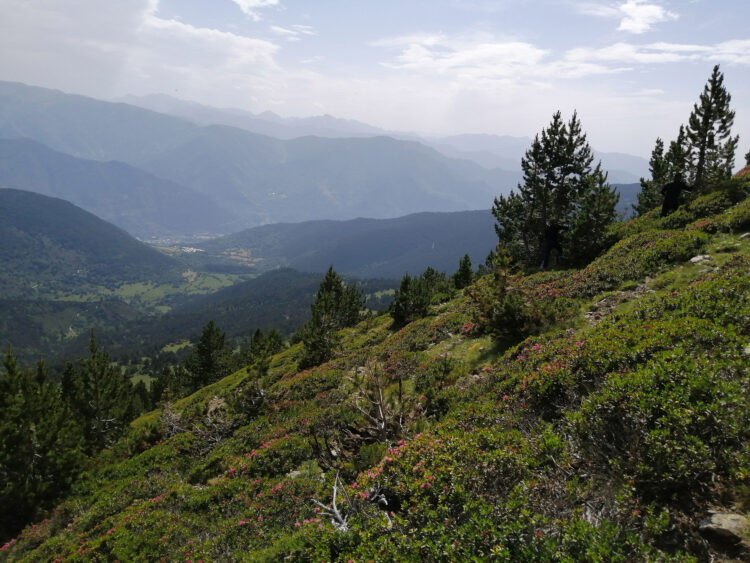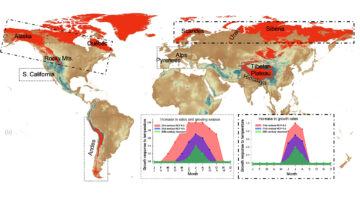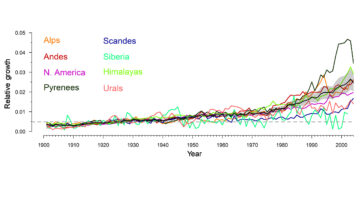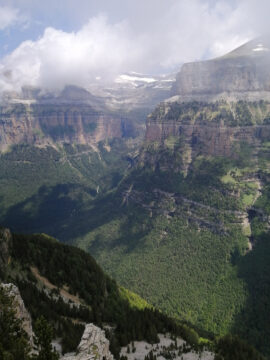
This novel study lead by the Pyrenean Institute of Ecology (IPE-CSIC) and University Pablo de Olavide (UPO) in Spain, in collaboration with 22 institutions around the world has evidenced that trees growing at the upper or poleward forest limits, named treelines, showed growth enhancements coupled with temperature rise since 1980. The growing season length in these ecosystems is limited by cold temperature in summer season; however, this study forecasts decoupling growth from climate warming under climate change scenarios during late 21st century. Such projected temperature-growth decoupling would impact ecosystem processes in mountain and polar regions, with feedbacks on climate warming.

Most of the 20 tree species analyzed in 37 treeline sites covering main biogeographical regions in the world (Figure 1), showed positive associations between growth and climate change during the second half of the 20th century (Figure 2) with influence of tree age. Nevertheless, the growth projections suggest that during the 21st century, growth will stop tracking temperature. Following a novel methodological approach, scientists expect a decoupling between tree growth and temperatures with consequences in the forests expansion and carbon sink capacity on these marginal ecosystems.
The study was published in the scientific journal Global Change Biology, and illustrates a strong association between the growing season temperature (summer) and tree growth during the 20th century in the 20 analyzed tree species, both in North hemisphere (Alps, North America, Pyrenees, Scandes, Siberia, Himalaya and Urals.) and South hemisphere (Andes). This work lead by J. Julio Camarero and Antonio Gazol, researchers at IPE-CSIC and Raúl Sánchez-Salguero, research and professor at UPO, has been titled: “Global fading of the temperature-growth coupling at alpine and polar treelines”

Dr. Camarero said “based on climate forecasts and the observed responses during the 20th century, the global temperatures increase in the coldest forests on the planet will lengthen the time window for growing in the Andean or Mediterranean regions, while, without modifying significantly the duration of the growing season the growth rate will increase in the alpine, boreal or sub-arctic regions”.
Therefore, if the duration of the optimal growing season in some of these species or zones continues to extend “the shift of treelines towards higher altitudes and latitudes, previously limited by the cold temperatures during the summer, will continue. So, climate change will cause the expansion of the forest boundary in subalpine and sub-arctic forests, also increasing their productivity”, explains Antonio Gazol, researcher at IPE-CSIC.
The researchers used a novel mathematical models that project how the tree-ring width of trees at the treelines will change as a function of climatic trends during 20th and future climate scenarios for the 21st century. Following the warmest RCP 8.5 scenario, most of these forest limits will be no longer limited by low temperatures in summer, thus showing a temperature-growth decoupling by the end of the 21st century. According to the forecasts, more than half of these treelines will increase their growing season by 1-2 months by 2050, with 80% of the sites increasing their productivity and growing season length from 2 to 6 months by 2100 (Figure 1).

According to Raúl Sánchez-Salguero, researcher and professor at Pablo de Olavide University, “to evaluate and understand the complex responses of trees to climate change in subalpine and sub-arctic treelines, following this novel methodology, will allow us to improve global dynamic vegetation models in terms of their role as carbon sinks. This will generate new monitoring and forecasting tools for decision-making in the face of climate change”.
The wide diversity of environments considered offers an excellent example of the climate change effects in many worldwide cold forests during the 21st century. Following these new results, scientists and managers would identify and understand when climate will favor tree growth, thus, how, temperature rise can help to predict expansion or retraction in forest ecosystems.
In addition to the Pyrenean Institute of Ecology and the Pablo de Olavide University, researchers from the following institutions have collaborated in this work: Centro de Investigación en Ecosistemas de la Patagonia (Chile), Univ. Barcelona (Spain), CREAF-CSIC (Spain), Natural Resources Canada and Centre d’Études Nodiques-Univ. Laval (Canada), Universidad de Pavoda (Italy), Univ. California (USA), Nepal Academy of Sciences and Technology (Nepal), Chinese Academy of Sciences (China), Norwegian Institute for Nature Research (Norway), CNRS (France), Siberian Federal University (Russia), Norwegian Biodiversity Information Centre (Norway), Institute of Plan and Animal Ecology (Russia), Univ. Valladolid (Spain), University of Bergen (Norway), University of Turku (Finland), Moscow State University (Russia) y University of Greifswald (Germany).
Reference: Camarero, J.J., Gazol, A., Sánchez-Salguero, R., Fajardo, A., McIntire, E.J.B., Gutiérrez, E., Batllori, E. et al. 2021. Global fading of the temperature-growth coupling at alpine and polar treelines. Global Change Biology https://doi.org/10.1111/gcb.15530





